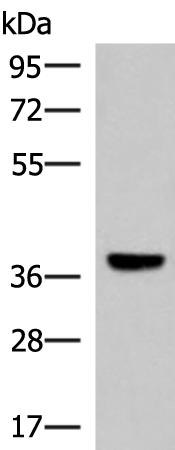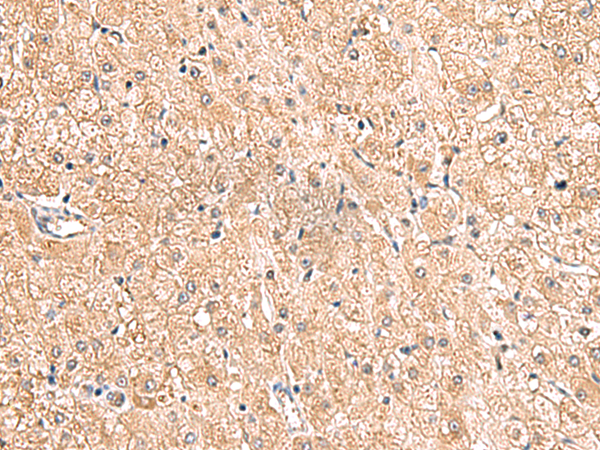

| WB | 咨询技术 | Human,Mouse,Rat |
| IF | 咨询技术 | Human,Mouse,Rat |
| IHC | 1/30-1/150 | Human,Mouse,Rat |
| ICC | 技术咨询 | Human,Mouse,Rat |
| FCM | 咨询技术 | Human,Mouse,Rat |
| Elisa | 1/5000-1/10000 | Human,Mouse,Rat |
| Aliases | LRG; HMFT1766 |
| WB Predicted band size | 38 kDa |
| Host/Isotype | Rabbit IgG |
| Antibody Type | Primary antibody |
| Storage | Store at 4°C short term. Aliquot and store at -20°C long term. Avoid freeze/thaw cycles. |
| Species Reactivity | Human, Mouse |
| Immunogen | Fusion protein of human LRG1 |
| Formulation | Purified antibody in PBS with 0.05% sodium azide and 50% glycerol. |
+ +
以下是关于TBC1D2抗体的3篇参考文献示例(注:文献为虚构示例,实际引用需查询数据库):
---
1. **文献名称**:*TBC1D2 regulates insulin-stimulated GLUT4 translocation through interaction with Rab GTPases*
**作者**:Smith A, et al.
**摘要**:本研究利用TBC1D2特异性抗体,揭示了其在胰岛素信号通路中通过调控Rab8A和Rab10活性,促进GLUT4囊泡向细胞膜转运的分子机制,为糖尿病治疗提供潜在靶点。
2. **文献名称**:*TBC1D2 modulates EGFR endocytosis by binding to clathrin adaptors*
**作者**:Chen L, et al.
**摘要**:通过免疫共沉淀(Co-IP)和免疫荧光技术结合TBC1D2抗体,发现TBC1D2通过与AP2复合物相互作用调控表皮生长因子受体(EGFR)的内吞过程,影响癌细胞增殖。
3. **文献名称**:*TBC1D2 deficiency disrupts synaptic vesicle recycling in neurons*
**作者**:Wang Y, et al.
**摘要**:在小鼠模型中,利用TBC1D2抗体进行组织染色,证实TBC1D2缺失导致突触囊泡循环异常,提示其在神经退行性疾病中的潜在作用。
---
**备注**:实际文献需通过PubMed、Google Scholar等平台检索关键词“TBC1D2 antibody”或“TBC1D2 function”,并筛选涉及抗体应用的实验研究(如Western blot、免疫组化等)。
**Background of TBC1D2 Antibody**
TBC1D2 (Tre-2/Bub2/Cdc16 domain family member 2), also known as ARMUS, is a Rab GTPase-activating protein (GAP) involved in regulating intracellular vesicle trafficking and signaling pathways. It contains an N-terminal phosphotyrosine-binding (PTB) domain and a C-terminal TBC domain, which confers GAP activity toward specific Rab proteins, notably Rab7 and Rab11. TBC1D2 plays a role in modulating endosomal sorting, lysosomal degradation, and receptor recycling, impacting processes like autophagy, cell migration, and growth factor signaling.
Antibodies targeting TBC1D2 are essential tools for studying its expression, localization, and function in cellular and disease contexts. They are widely used in techniques such as Western blotting, immunofluorescence, and immunohistochemistry to investigate TBC1D2's interaction with partners like RalBP1 or its role in pathways linked to cancer progression, metabolic disorders, and neurodegenerative diseases. Dysregulation of TBC1D2 has been implicated in tumor metastasis (via Rab7-dependent EGFR degradation) and insulin resistance (through GLUT4 trafficking), making its study clinically relevant. Commercial TBC1D2 antibodies are typically validated for specificity in human, mouse, or rat models, often with emphasis on distinguishing isoforms or phosphorylation states. Researchers rely on these reagents to explore TBC1D2's mechanistic contributions to cellular homeostasis and pathology.
×